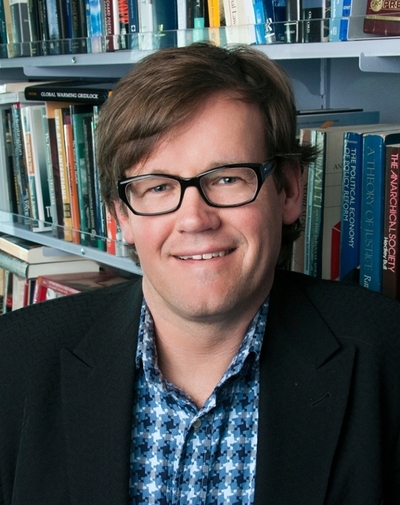Study Reveals Increasing Polarization in Climate Change Coverage Between Elite and Heartland News Sources
Story by:
Published Date
Article Content
New research led by the University of California San Diego School of Global Policy and Strategy reveals a crucial disparity in how climate change is reported across different types of news outlets and locations.
National newspapers, which are mostly concentrated along the coasts and in metropolitan areas have expanded their climate desks and significantly increased their coverage, whereas smaller news sources based in America’s heartland have also increased their coverage but at a much slower rate.
The study, published in Springer’s Climatic Change, finds that from 2011 to 2022, elite news sources like The New York Times and The Wall Street Journal saw an increase in climate change coverage by 299%, whereas heartland news sources increased their coverage by 144%. In other words, in 2011, there was a 30% chance that a heartland newspaper would run a story on climate change on any given day. Today, there is about a 3% chance.
“The success of climate policy in America depends a lot on the public being engaged and supportive,” said David Victor, professor of innovation and public policy at the School of Global Policy and Strategy and corresponding author of the paper. “Since 2015, elite media mainly along the coasts have given a lot of attention to climate change, but the heartland has not. That tells us that a politically durable climate policy must pay much closer attention to what’s happening in the rest of the country, including rural areas and especially in the center right of American politics.”
This comprehensive research, leveraging a vast database known as MediaCloud, analyzed 168 million articles from 9,000 unique U.S. news sources to understand public awareness and opinion on climate change.

A time when climate change coverage increased in both national and local/rural newspapers was when Pope Francis made comments about climate change at the United Nations general assembly meeting in 2015. Credit: Birute/iStock.
While coverage of climate change increased overall, it is not a topic that consistently holds the public’s attention, the study finds.
For example, the largest drop in climate change coverage among national newspapers occurred in the first half of 2020 as Covid-19 began to spread in the U.S. and overall news coverage shifted to the pandemic. Other periods of decline include the lead up to the 2016 election.
However, a time when climate change coverage increased in both national and local/rural newspapers was when Pope Francis made comments about climate change at the United Nations general assembly meeting in 2015.
“A major implication of this research is that when the environment intersects with other issues that people care passionately about, like religion, jobs, or local air quality, that is when it really becomes politically durable to get bipartisan support on climate change legislation,” Victor, who is co-director of UC San Diego’s Deep Decarbonization Initiative, said.

He added that this is a core message in the American Academy of Arts and Sciences report, How to Accelerate Climate Action Across America, which Victor chairs.
The lesser climate coverage in state and local news is especially surprising because of changes to the media industry. Over the study period, smaller news sources have become more dependent on larger media outlets and wire services as news feeds. Despite that dependence, the heartland news outlets didn’t cover climate change nearly as much.
“This research serves as a reminder for those studying the role that media plays in informing the public about pressing global issues, that they need to look at all sources of news, not just the major outlets that we always think about like the New York Times or Washington Post,” Victor and co-author Parker Bolsted, a former research assistant at the Brookings Institution, said. “We need to pay attention to regions where local news is the primary information source to really understand the public awareness and opinion on climate issues.”
Learn more about research and education at UC San Diego in: Climate Change
Share This:
You May Also Like
UC San Diego is Strengthening U.S. Semiconductor Innovation and Workforce Development
Technology & EngineeringStay in the Know
Keep up with all the latest from UC San Diego. Subscribe to the newsletter today.




